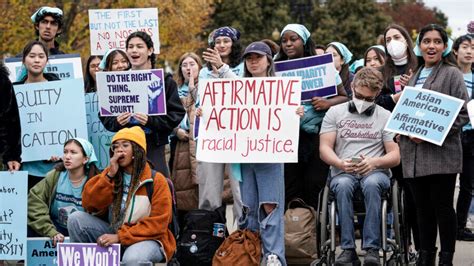Introduction
Affirmative action refers to policies and practices designed to combat historical discrimination and promote equal opportunity for marginalized groups. Liberals generally support affirmative action measures, believing they are essential for creating a more just and equitable society. This article explores liberals’ stance on affirmative action, discussing its history, arguments in favor and against it, legal implications, and recent developments.

History of Affirmative Action
Affirmative action emerged in the United States in the mid-20th century as a response to widespread discrimination against African Americans, women, and other minority groups. In 1961, President John F. Kennedy issued Executive Order 10925, requiring government contractors to take affirmative action to ensure equal employment opportunities. The Civil Rights Act of 1964 further prohibited discrimination based on race, color, sex, religion, or national origin.
Arguments in Favor of Affirmative Action
Liberals argue that affirmative action is necessary to address systemic racism and discrimination that have persisted despite formal anti-discrimination laws. They contend that:
- Historical discrimination has created ongoing disparities: Minorities and women have historically faced barriers to education, employment, and housing that have not been fully rectified.
- Affirmative action levels the playing field: It provides a temporary advantage to underrepresented groups to help them overcome these barriers and compete on a level field.
- Diversity benefits society: Creating a more diverse workforce and student body enriches perspectives, fosters innovation, and promotes social cohesion.
Arguments Against Affirmative Action
Opponents of affirmative action argue that it is unfair and discriminatory, and that it:
- Penalizes individuals based on their race or gender: It may result in qualified candidates being passed over for positions or admissions in favor of less qualified candidates from underrepresented groups.
- Creates resentment: It can lead to feelings of injustice among non-beneficiaries, who may perceive it as a form of reverse discrimination.
- Perpetuates stereotypes: It reinforces the idea that certain groups are inherently less capable or deserving than others.
Legal Implications of Affirmative Action
Affirmative action policies have faced legal challenges, particularly regarding their impact on non-minority applicants. The Supreme Court has upheld affirmative action in limited circumstances, such as when programs are designed to remedy past discrimination or achieve compelling governmental interests.
In the landmark case of Regents of the University of California v. Bakke (1978), the Court ruled that a medical school’s admissions policy that explicitly set aside a certain number of slots for minority students was unconstitutional. However, the Court also recognized that universities have a legitimate interest in promoting diversity, and that they may consider race as one factor in admissions decisions.
Recent Developments in Affirmative Action
In recent years, several states have passed laws restricting or banning affirmative action in public universities and government contracting. California, for example, passed Proposition 209 in 1996, which prohibits discrimination or preferential treatment based on race, sex, or ethnicity in public hiring, contracting, and education.
The Trump administration also took steps to roll back affirmative action policies, including rescinding Obama-era guidance that encouraged universities to consider diversity in admissions.
Tips and Tricks
The following tips and tricks can help you understand and engage with liberals’ stance on affirmative action:
- Be aware of the historical context: Affirmative action is rooted in a history of discrimination and inequality.
- Consider the different perspectives: There are both valid arguments for and against affirmative action.
- Research the legal implications: The use of affirmative action policies is subject to constitutional and legal constraints.
- Be respectful and open-minded: Engage in discussions about affirmative action with respect for differing viewpoints.
Common Mistakes to Avoid
Avoid the following common mistakes when discussing liberals’ stance on affirmative action:
- Assuming that liberals blindly support affirmative action: Liberals have diverse views on the issue and acknowledge its potential drawbacks.
- Ignoring the historical context: Affirmative action is not a solution to all problems, but it is an important tool for addressing ongoing discrimination.
- Making generalizations: Statements such as “all liberals support affirmative action” or “all conservatives oppose it” are oversimplifications.
FAQs
1. What is the main goal of affirmative action?
To combat historical discrimination and promote equal opportunity for marginalized groups.
2. Why do liberals support affirmative action?
They believe it is necessary to level the playing field and create a more diverse and just society.
3. What are the arguments against affirmative action?
It can penalize individuals based on their race or gender, create resentment, and perpetuate stereotypes.
4. Is affirmative action constitutional?
Yes, but only in limited circumstances, such as when it is designed to remedy past discrimination or achieve compelling governmental interests.
5. What are some recent developments in affirmative action?
Several states have passed laws restricting or banning affirmative action in public universities and government contracting.
6. Why is it important to have diverse perspectives on affirmative action?
It helps us understand the different arguments and potential consequences of these policies.
7. What is the best way to engage in discussions about affirmative action?
Be respectful, open-minded, and aware of the historical and legal context.
8. Is affirmative action a permanent solution to discrimination?
No, it is a temporary measure to address ongoing disparities and create a more level playing field.
